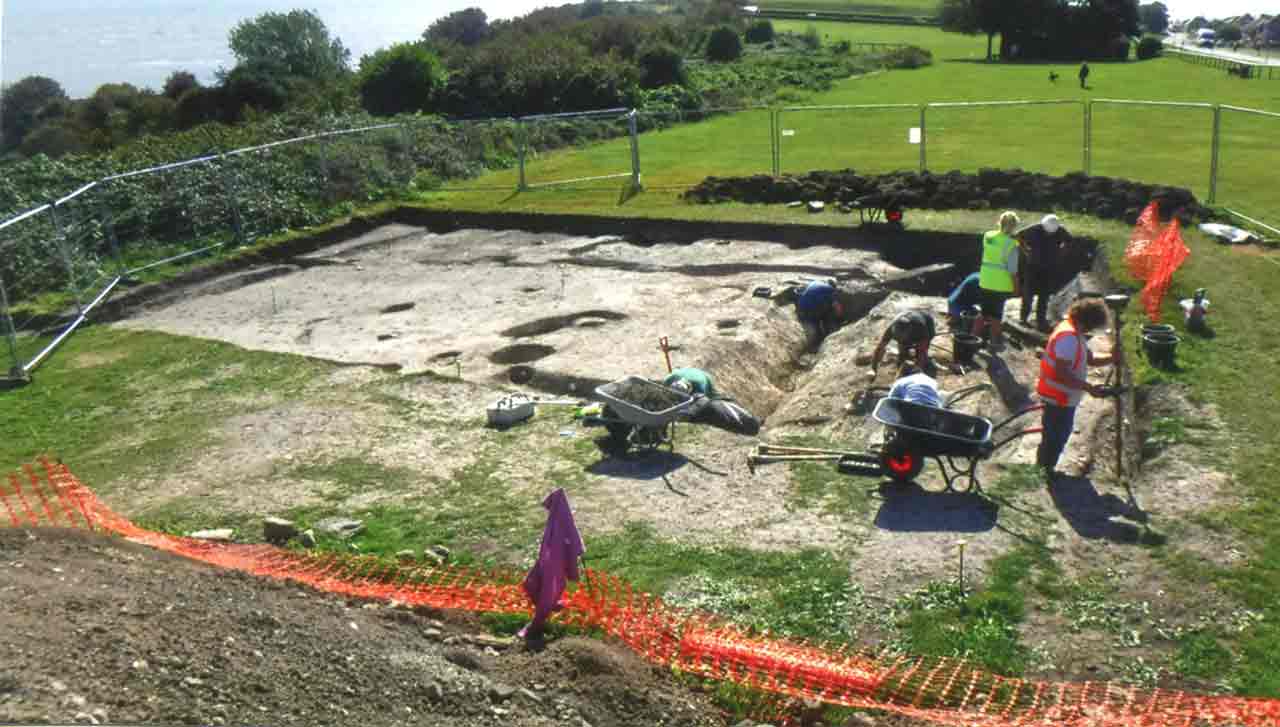An overview of the 2023 Iron Age excavations Photo: Ray Duff
By Ray Duff – The Canterbury Archaeology Trust, along with local and regional archaeology groups and university students, have been exploring a new section of the East Cliff site in Folkestone.
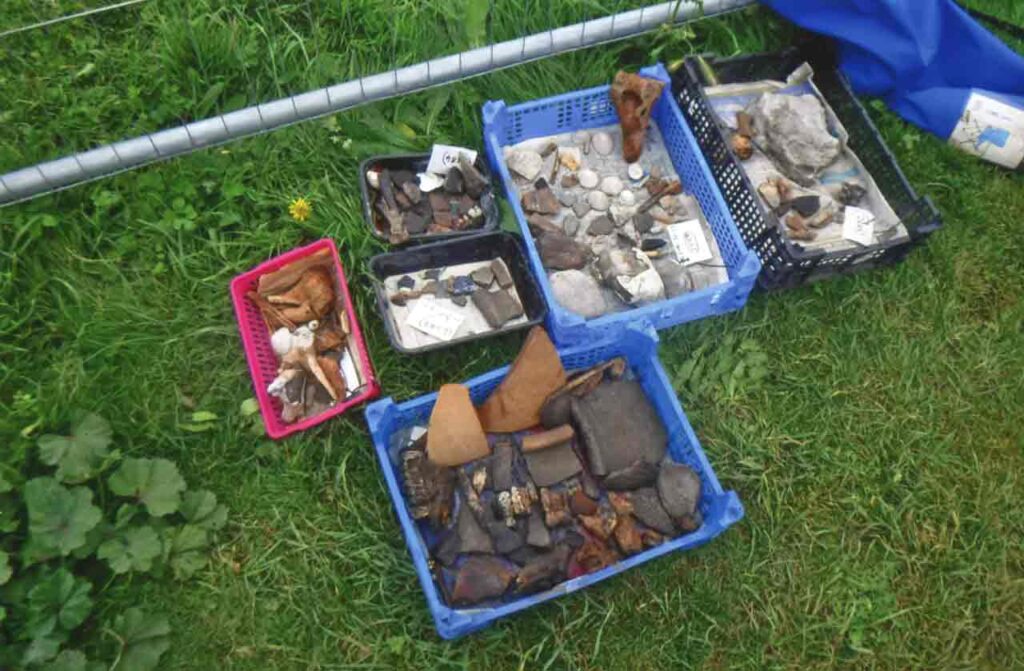
Some of the multiple finds found Photo: Ray Duff
This site is of national and international significance, as it reveals the life and work of the Iron Age people who lived and produced querns there.
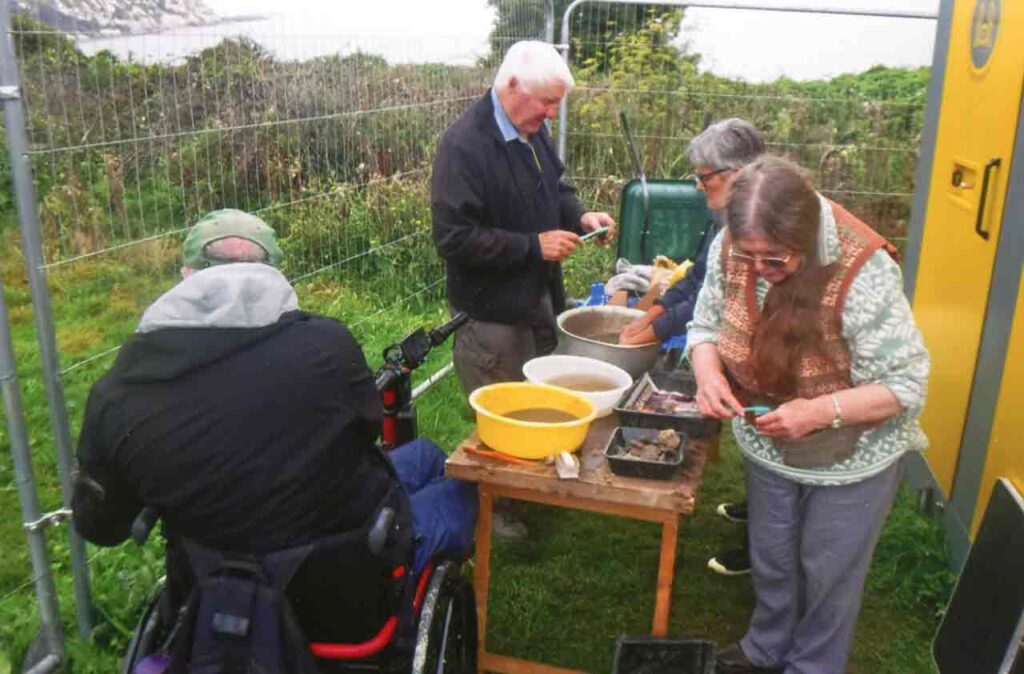
The finds washing proceeding apace Photo: Ray Duff
The site also overlaps with the Roman Villas, showing the continuity and change of the area over time.

A view west over the late 1stC AD Roman field ditches Photo: Ray Duff
Finds this year included:-
– Further extensive late Iron Age ditch structures and some pits, likely dating to the first century BC and possibly into the early 1stC AD.
– A second Iron Age roundhouse, identified by its ‘drip gully’ part surrounding it, and associated materials within also dated to the late first century BC; and a suspected enclosure ditch related to the roundhouse.
– Some early Roman period field boundary ditches currently dated to the late first century AD
– Numerous finds of domestic animal bone, including from cow, sheep, horse etc; along with much late Iron Age pottery sherds, and a few pieces of Roman amphora. The identifying and dating of these finds, which also helps pin down site occupation activities and dates, will follow after being sent to experts for examination.
– Further remains of full or partial quern stones – for corn grinding – made from the local greensand from Copt Point. Folkestone’s likely earliest industry which may have lasted some centuries BC.
– A modern land drain, likely early 20thC, also crossed part of the site.
– There was also a large pit area in the SW corner, which has a lot of various materials within it which has caused the archaeologists to wonder what was going on. It included some animal bone, pot, querns, and two very large greensand slabs buried in earth rather than the usual clay. It is very likely this part of the area will require further excavations in subsequent years to fully understand what was going on.
Generally during the excavations the local volunteers assisted with washing and drying the many finds and/or helped with the digging, whilst many passers-by visited the site to learn about our early history and a number of primary schools also visited to provide children with a little hands on experience.
CENTENNARY OF THE ROMAN VILLAS – 2024
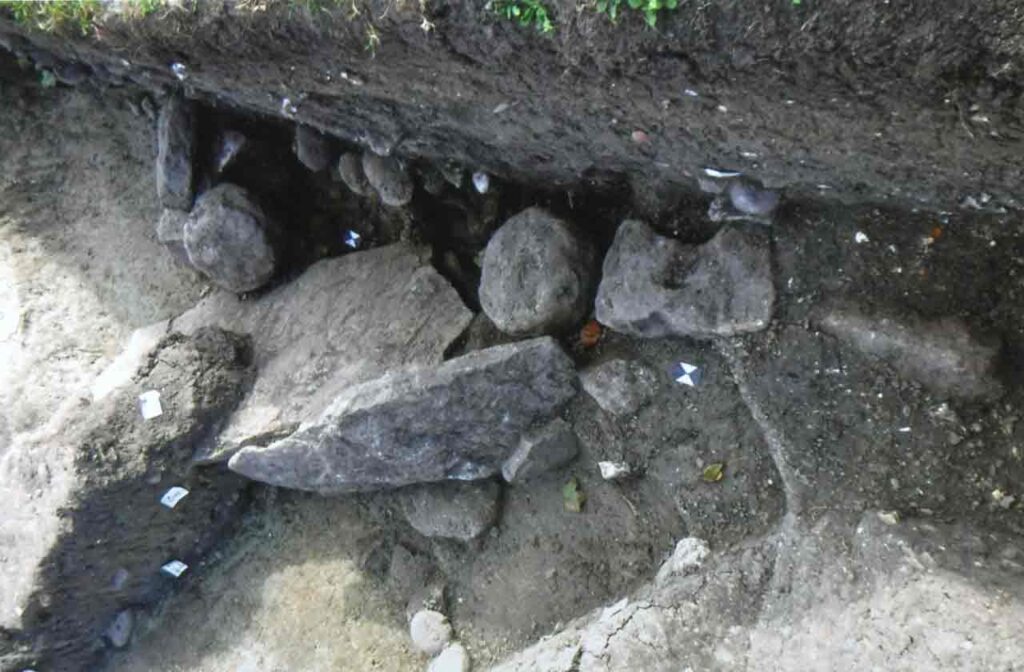
The intriguing South West corner pit with querns and stone slabs Photo: Ray Duff
Next year, 2024, see’s the 100th anniversary of the first full excavations of the double Roman Villa on East Cliff by Samuel Winbolt and his team in 2024. The Villas sit on top of the extensive Bronze and Iron Age settlement sites also known on East Cliff and with signs of Stone Age occupation also.
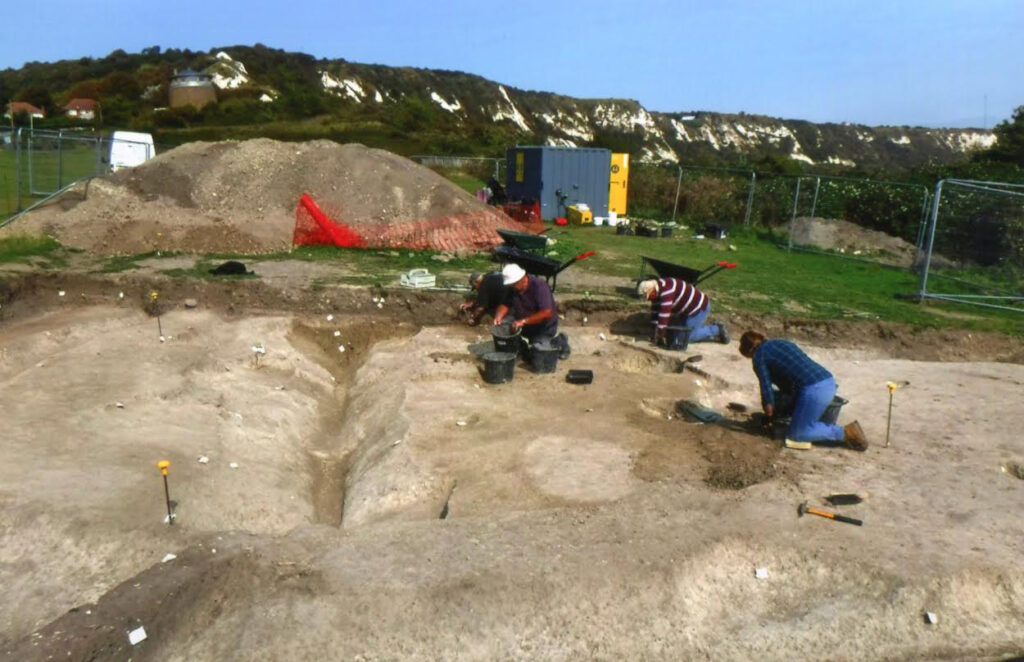
Excavations continued, under the cliffs, on the last day Photo: Ray Duff
Further information about activities and excavations linked to this anniversary will be announced nearer the date, but Folkestone Museum is planning a major exhibition about the Winbolt family, and the excavations on East Cliff are scheduled, but to be confirmed, for next August/September. Watch these spaces!
Further info
Canterbury Archaeology Trust : https://www.facebook.com/CanterburyArchaeologicalTrust/
East Wear Bay project: https://www.facebook.com/eastwearbay/
Folkestone Research and Archaeology Group: https://www.facebook.com/FolkestoneResearchAndArchaeologyGroup/
Folkestone Museum: https://www.facebook.com/folkestonemuseum/
Samuel E. Winbolt: https://en.wikipedia.org/wiki/S._E._Winbolt
